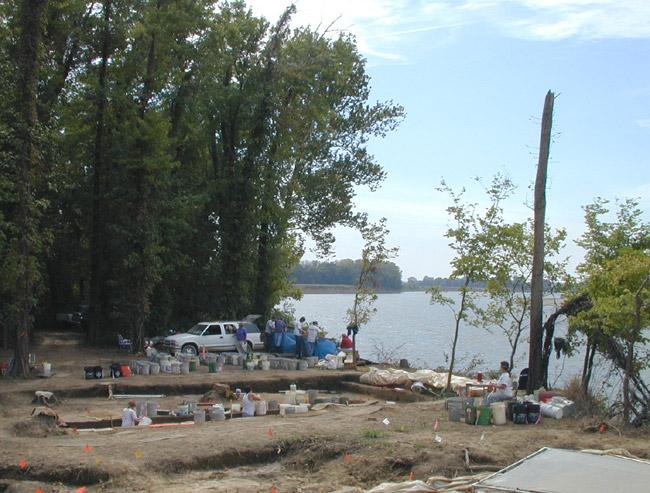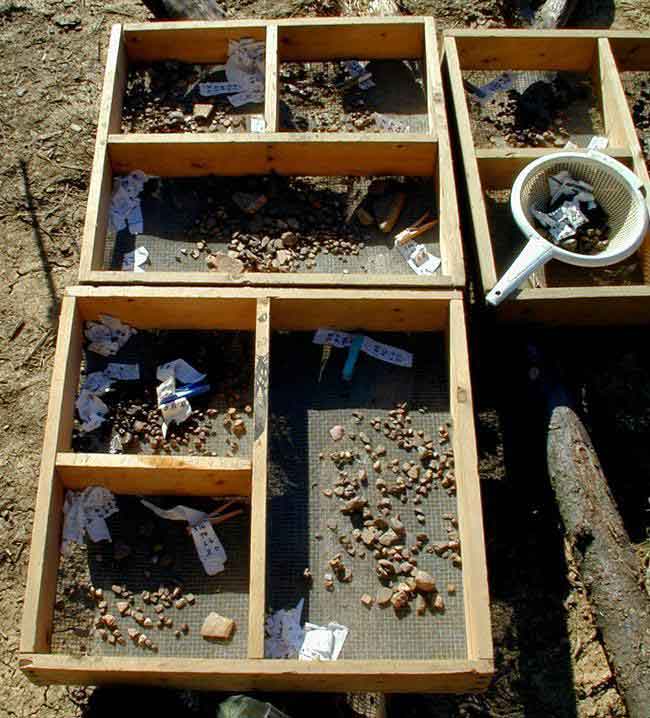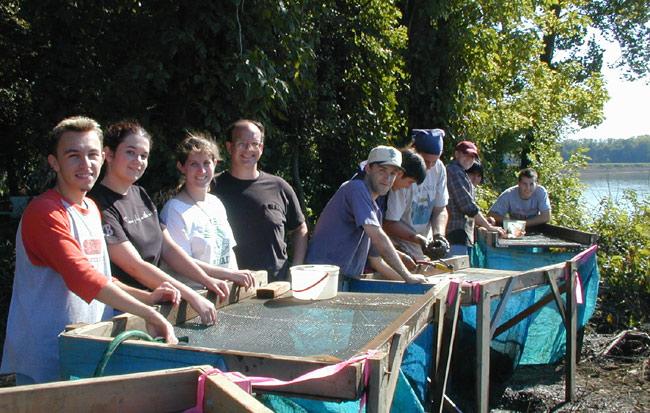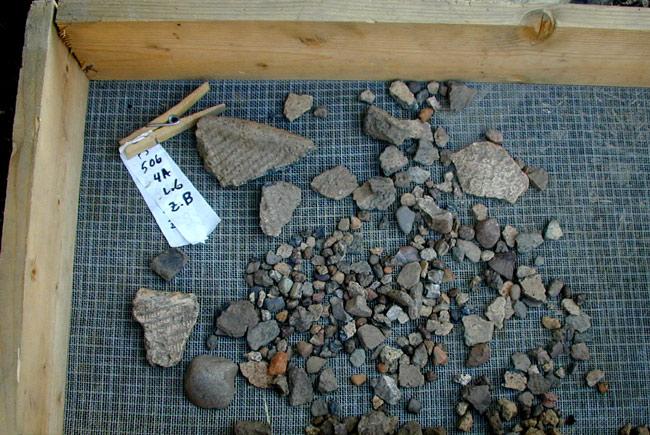Bone Bank Archaeological Research
Posey County, Indiana
Rescue Excavations at the Bone Bank Archaeological Site in Southwestern Indiana
 Introduction
Introduction
 Indiana's First Archaeological Excavation
Indiana's First Archaeological Excavation
 Survey and Testing
Survey and Testing
 Significance
Significance
 Project Goals
Project Goals
 Research Stages
Research Stages
 Expected Results
Expected Results
 Bone Bank in 2000
Bone Bank in 2000
 Planning for 2001
Planning for 2001
 Current Work
Current Work
 In the News
In the News
 Fall 2001 Lecture
Fall 2001 Lecture
 References
References
 Geomorphological History
Geomorphological History
 Links
Links

September 19 to 23, 2001
Excavations continued with water-screening of each level.

Excavation of Units 4A-4J reached level 11, which underlies the Mississippian deposits.

Professor Marjorie Jones and students from the University of Southern Indiana volunteer their time to help with water-screening. Each 10 cm level in a 1 x 1 m unit requires the processing of about 16 buckets of excavated soil.

After soil is dissolved during water-screening, the remaining materials in the excavation samples are dried in screen boxes and then taken back to the lab for later analysis.

Students from the University of Evansville, along with Professor Patrick Thomas, have been a major help the rescue excavation project. For Units 4A to 4J, levels 3 through 10, about 19 tons of soil have been excavated, placed in tagged buckets, water-screened, dried, and bagged & boxed for later analysis. More than 600 pottery sherds (> ½ inch) were recovered in these levels.

Close-up of water-screened sample from FS 506 in the Mississippian midden (Unit 4A, Level 6, Zone B). Labels on flagging tape for each bucket identify the field specimen number and are transferred from the bucket to the water-screen container, and then to the drying screen to maintain control of provenience. This sample contains pieces of fabric impressed pottery bowls (shallow wok-like vessels), part of a narrow-necked ceramic water bottle, other pottery sherds, cracked rock, and small pieces of bone.

Previous Weeks
First Week (August 22-26, 2001)
Second Week (August 29 - September 2, 2001)
Third Week (September 5 - September 9, 2001)
Fourth Week (September 12 - September 16, 2001)
Fifth Week (September 19 - September 23, 2001)
Sixth Week (September 26 - September 30, 2001)
October (October 1 - October 26, 2001) Part 1
October (October 1 - October 26, 2001) Part 2
Thanks Everyone!
Current Week
Return to Top
Last updated on 4/02/2024
Send Comments to: munsonc@indiana.edu
Site sponsored by Indiana University
 Introduction
Introduction
 Indiana's First Archaeological Excavation
Indiana's First Archaeological Excavation
 Survey and Testing
Survey and Testing
 Significance
Significance
 Project Goals
Project Goals
 Research Stages
Research Stages
 Expected Results
Expected Results
 Bone Bank in 2000
Bone Bank in 2000
 Planning for 2001
Planning for 2001
 Current Work
Current Work
 In the News
In the News
 Fall 2001 Lecture
Fall 2001 Lecture
 References
References
 Geomorphological History
Geomorphological History
 Links
Links






